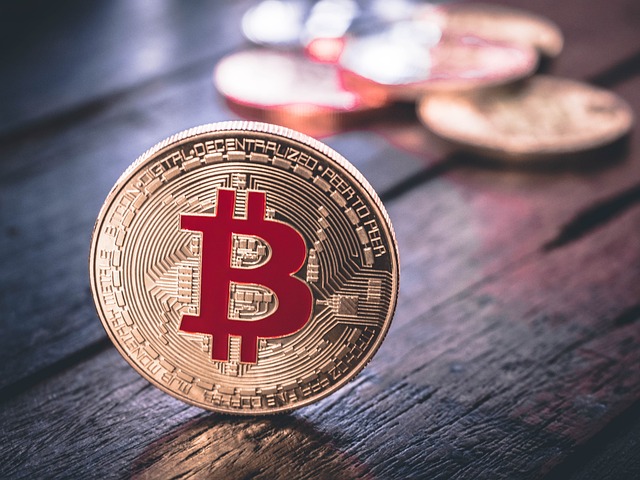In bull runs of the cryptocurrency market, where high user participation and global appeal create lucrative targets for cybercriminals, exchanges face intense security challenges. To safeguard user assets and maintain market stability, they must prioritize robust security strategies including advanced encryption, multi-factor authentication (MFA), cold storage solutions, regular third-party audits, and continuous monitoring. Neglecting these measures due to relaxed attitudes or rapid gains can lead to high-profile hacks, emphasizing the crucial need for stringent security protocols during bullish periods.
In the dynamic realm of cryptocurrency, exchange security is paramount as digital assets surge in value during bull markets. This article delves into the intricate world of cryptocurrency exchange security measures, exploring threats and best practices. From understanding the impact of market sentiment on exchange vulnerabilities to implementing key security protocols, we uncover strategies essential for fostering a safe and robust cryptocurrency ecosystem during periods of heightened market sentiment.
- Understanding Cryptocurrency Exchange Security Threats
- Key Security Measures for Cryptocurrency Exchanges
- The Impact of Market Sentiment on Exchange Security
- Best Practices to Ensure Cryptocurrency Market Safety During Bull Runs
Understanding Cryptocurrency Exchange Security Threats

In the dynamic landscape of the cryptocurrency market, especially during bull markets where sentiment is high and participation surges, exchanges face heightened security challenges. These platforms serve as digital wallets and trading hubs for cryptocurrencies, attracting a vast array of users from all corners of the globe. As a result, they become prime targets for cybercriminals seeking to exploit vulnerabilities for financial gains. Security threats range from sophisticated hacking attempts aimed at stealing user funds to malicious activities like phishing, which try to trick users into divulging sensitive information. Moreover, with the decentralized nature of cryptocurrencies, exchanges must contend with regulatory pressures and compliance issues, adding another layer of complexity to their security measures.
The cryptocurrency market’s frenetic pace and high liquidity during bull markets can create an environment where security takes a backseat to rapid growth and profit opportunities. However, this complacency can be disastrous. Exchanges must invest heavily in robust security infrastructure, including advanced encryption techniques, multi-factor authentication mechanisms, and continuous monitoring of network activities. They should also implement stringent know-your-customer (KYC) procedures to mitigate the risk of money laundering and terrorist financing. By understanding these threats and adopting comprehensive security strategies, cryptocurrency exchanges can ensure a more secure trading environment for their users, fostering market confidence during bullish periods and beyond.
Key Security Measures for Cryptocurrency Exchanges

In the dynamic and ever-evolving cryptocurrency market, where sentiments can swing dramatically between bull and bear markets, ensuring robust security measures is paramount for exchanges to protect user assets. Beyond basic encryption and secure servers, leading cryptocurrency exchanges implement multi-factor authentication (MFA) to add an extra layer of protection during login attempts. Additionally, they utilize cold storage solutions for significant funds, keeping them detached from more frequently accessed hot wallets.
Furthermore, these exchanges employ advanced security protocols like zero-knowledge proofs and smart contracts to facilitate secure transactions while maintaining user privacy. Regular security audits by independent third parties are also conducted to identify vulnerabilities and ensure compliance with industry best practices. This proactive approach not only safeguards against potential hacks but also instills confidence in the cryptocurrency market during periods of heightened sentiment fluctuations.
The Impact of Market Sentiment on Exchange Security

During bull markets, the overall positive sentiment in the cryptocurrency space can inadvertently lead to increased security risks for exchanges. As more investors flock to the market, the surge in trading volume and higher asset values create a potent combination that attracts malicious actors. The heightened optimism and demand for cryptocurrencies can mask potential vulnerabilities within exchange platforms, making them attractive targets for hackers and fraudsters.
The cryptocurrency market sentiment during bull markets often focuses on rapid gains and speculative investments, leading to a relaxed attitude towards security measures. This can result in exchanges cutting corners on their security protocols or failing to implement robust defenses, assuming that the market’s inherent volatility will deter malicious activities. However, such complacency can prove disastrous, as recent high-profile hacks have demonstrated.
Best Practices to Ensure Cryptocurrency Market Safety During Bull Runs

During periods of high growth and positive cryptocurrency market sentiment in bull runs, it’s crucial to implement robust security measures to protect investors and exchanges alike. As volumes surge, so does the risk of cyberattacks, with hackers targeting both individual wallets and centralized exchanges. Best practices include employing multi-factor authentication (MFA) for user accounts, utilizing cold storage for high-value assets, and implementing sophisticated encryption protocols to safeguard sensitive data. Regular security audits and penetration testing are essential to identify vulnerabilities before malicious actors can exploit them.
Moreover, exchanges should foster a culture of continuous monitoring and proactive risk management. This involves staying abreast of emerging threats through industry intelligence sharing and integrating advanced threat detection systems. User education is another vital component, empowering investors with knowledge about best practices for securing their digital assets and recognizing potential scams or phishing attempts. In the dynamic landscape of cryptocurrency markets, these measures are critical to maintaining trust and ensuring market stability during bull runs.
Cryptocurrency exchanges face unique security challenges, especially during bull markets where high volatility and increased trading volumes create new vulnerabilities. By understanding threats like phishing, hacking, and market manipulation, and implementing robust measures such as multi-factor authentication, secure data storage, and rigorous regulatory compliance, exchanges can better protect users’ assets. Maintaining a close watch on market sentiment is crucial, as positive sentiment can boost prices but also attract malicious actors. Adhering to best practices, including continuous security audits and transparent communication with users, ensures the safety of the cryptocurrency market during periods of growth and uncertainty alike.
